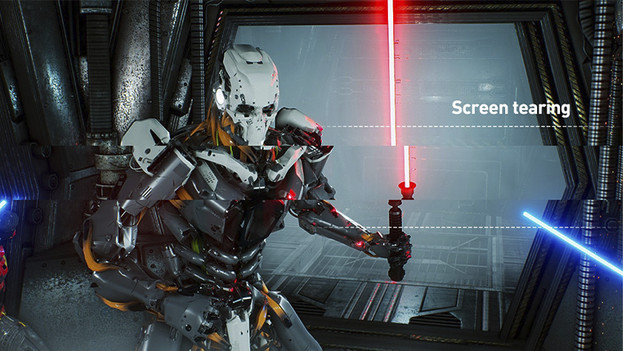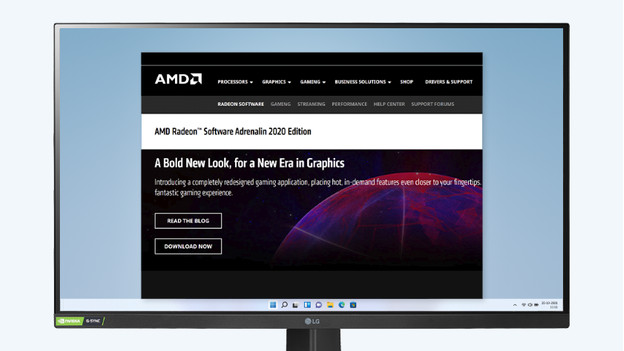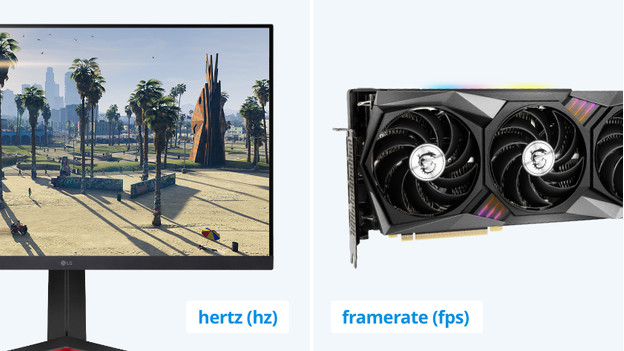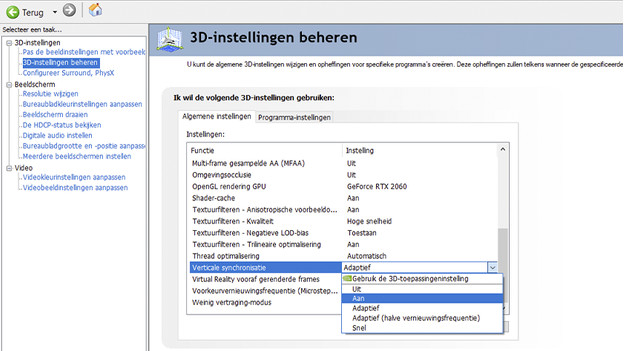
How do you solve screen tearing and stuttering?
Solve screen tearing and stuttering

If the fps of your video card and the refresh rate of your monitor aren't synchronized, you'll see horizontal tears in your frames. This is called screen tearing. Does your monitor refresh more frequently than the fps of your GPU? Your images will stutter, which is called screen stuttering. You can solve these artifacts as follows:
- Do you have a NVIDIA GPU? Set up G-Sync.
- Do you have an AMD GPU? Set up FreeSync.
- Don't have G-Sync or FreeSync? Set up VSync
Do you have a NVIDIA GPU? Set up G-Sync.

Do you have a NVIDIA video card and a G-Sync (compatible) monitor? G-Sync can match the refresh rate of your monitor to the number of frames that your video card produces. You'll never experience screen tearing again. You can set it up as follows:
- Make sure the NVIDIA drivers are installed and updated. If not, go the link at the bottom of this paragraph.
- Go to your desktop, right-click it, and choose NVIDIA Control Panel.
- Select Set up G-Sync in the menu on the left.
- Check the box for Enable G-Sync, G-Sync Compatible.
- Now choose if you only want to enable G-Sync full screen or windowed as well.
- Select your monitor with G-Sync and check the box for Enable settings for the selected display model.
- Select Display -> G-Sync Indicator if you want to check in-game whether G-Sync is activated.
- Click Apply and close the Control Panel.
Do you have an ADM GPU? Set up FreeSync

FreeSync is AMD's equivalent of G-Sync. For FreeSync, you need an AMD video card and a FreeSync monitor. You set it up as follows:
- Turn on FreeSync via the On Screen Display of your monitor.
- Download AMD Radeon Settings via the link at the bottom of this paragraph if you don't have it yet.
- Open and install AMD Radeon Settings on your PC.
- Go to your desktop, right-click it, and choose AMD Radeon Settings.
- Update your AMD drivers via the AMD Radeon Settings software.
- Reboot your PC once you've updated the drivers.
- Open the Radeon Settings again and go to the tab Display.
- Here, you can turn on AMD FreeSync and close the program.
Don't have G-Sync or FreeSync? Set up VSync.

Does your video card or monitor not support G-Sync or FreeSync? VSync is a good alternative that every video card supports by default. VSync lowers the number of fps to match the refresh rate of your monitor, so they're synchronized. Do you have a 60Hz monitor and can you reach 65 fps? VSync will lower it to 60 fps. But if you have less fps than Hz, VSync will reduce the number of frames by half. This results in stuttering. So if your video card only reaches 59 fps, VSync will lower it to 30 fps. That means you should only set up VSync if your fps is higher than your refresh rate.
How do you set up VSync?

Set up VSync with a NVIDIA GPU
- Go to your desktop, right-click it, and choose NVIDIA Control Panel.
- Go to Manage 3D settings.
- Find the option Vertical Sync (VSync) and turn it on.
- Click Apply and close the Control Panel.
Set up VSync with an AMD GPU
- Go to your desktop, right-click it, and choose AMD Radeon Settings.
- Go to the tab Gaming and select Global Settings.
- Here, you set Wait for Vertical Sync to Always On or choose On, Unless Application Specifies.
- Close the application.


